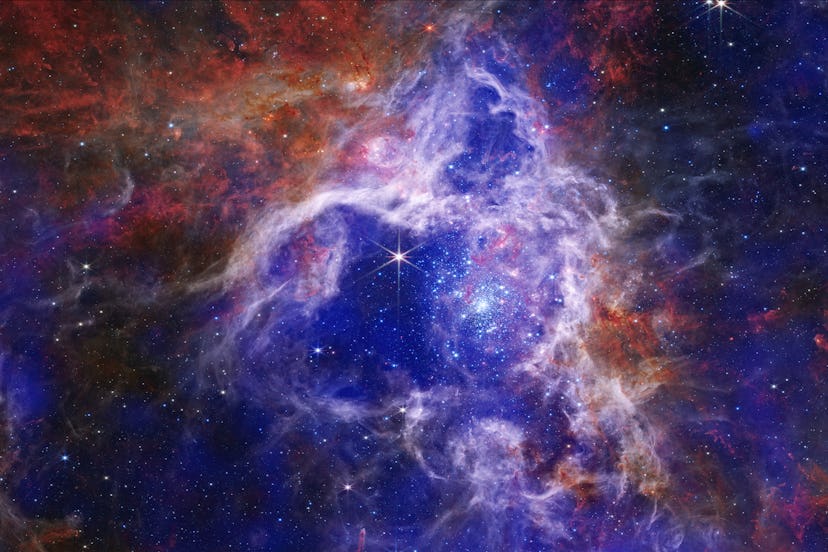Two Incredibly Powerful Space Cameras Just Revealed A Nebula Beyond Our Imagination
Another eye-catching image has been released by NASA thanks to the James Webb Space Telescope (JWST), featuring the beautiful 30 Doradus nebula.

Another eye-catching image has been released by NASA thanks to the James Webb Space Telescope (JWST), featuring gorgeous swirls of deep blue, purple, and rust colors, with sparkles of stars throughout. The image alone is stunning, but it’s more than just an image — this is a very real place in the vastness of outer space.
According to NASA, this image shows the brightest and largest region of star formation in the Local Group of galaxies, including our Milky Way, called 30 Doradus, aka the Tarantula Nebula. The image was taken using two cameras on the JWST, and there’s an interesting reason why this new capture excites scientists.
Can you explain what’s happening in this photo like I’m 5?
The Tarantula Nebula is in the Large Magellanic Cloud, a neighboring galaxy to our Milky Way. This area has been studied by astronomers for years because there are 2,400 gigantic stars at the center of it that produce radiation and powerful winds. There’s a lot that can be learned from this section of space, and with each new image, there’s more the scientists uncover.
What you’re looking at here is an image of the nebula taken from two cameras, each capturing something different.
For example, the royal blue and purple hues show the gas around this area that’s “been heated to millions of degrees by shock waves.” These details were captured by X-ray data from NASA’s Chandra X-ray Observatory.
The red, orange, light blue, and green colors were captured by the JWST’s infrared camera, which shows the cooler gasses “that provide the raw ingredients for future stars,” NASA explains.
Another cool fact about 30 Doradus is that it’s a region similar to our Milky Way, but from billions of years ago. NASA explains this area “represents the conditions in our galaxy that existed several billion years ago when stars were forming at a much faster pace than astronomers see today.”
Given those similarities, “30 Doradus provides scientists with an opportunity to learn more about how stars formed in our galaxy in the distant past.”
For more details, visit NASA’s blog breaking down this incredible image.
This article was originally published on